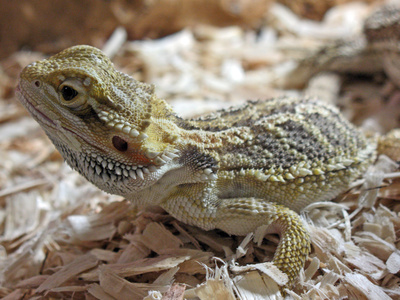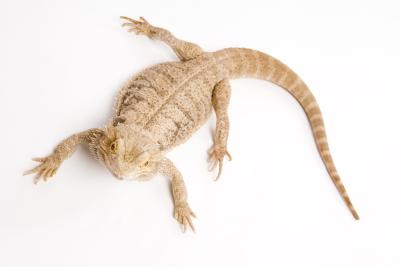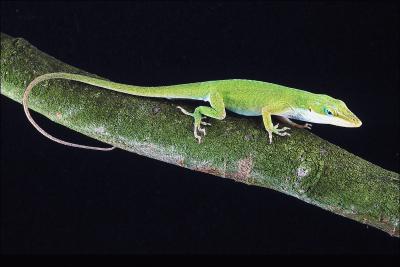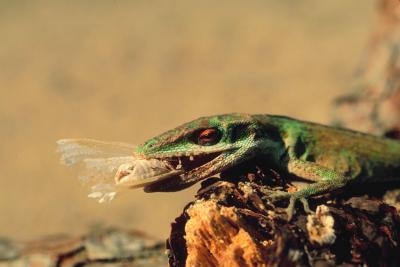
How to Care for a Sandfish Skink. A Sandfish skink is a wonderful, small lizard that would make a great first pet for those seeking a reptile. They are inexpensive and their care is minimal. They "swim" through sand like a fish does through water. Another positive is that they don't generally bite. Care for these wonderful lizards is simple and can be done by younger children with the help of an adult. This allows the child to have a pet that they can learn to care for that will be a constructive experience and hopefully start a lifelong love of animals of all types!
House your lizard. A reptile aquarium or a fish tank (at least 5 gallons) with the lid removed is necessary to create a world for your skink. On the bottom of the container, put some type of substrate (bedding). Two to four inches of calcium sand works well. The skink needs enough to burrow through. A water bowl or "pool" needs to be placed in a cool corner, so that your sandfish skink can cool off when necessary. Make sure to change the water every day.
Feed your lizard. Sandfish skinks eat crickets or mealworms. These are also inexpensive and can be purchased from a local pet store. Feed your skink three to four times a week about 4 crickets or mealworms. Make sure you place the food in the tank while it's still alive, as the skink needs to see it move as it would in nature.
Keep your lizard warm. The temperature inside the aquarium should be about 85 degrees F during the day and 75 degrees at night, include a basking rock that runs 105 degrees during the day. Heat lamps work better than heat pads, however, ask your local pet store. You will need to purchase a full spectrum UV light as they need about 12 hours a day of these rays. All of these items can be purchased at most pet stores.
 How to Take Care of a Florida Lizard
How to Take Care of a Florida Lizard
H
How to Take Care of a Florida Lizard
How to Take Care of a Florida Lizard
H
 How to Tell the Difference Between Male & Female Lizards
How to Tell the Difference Between Male &
How to Tell the Difference Between Male & Female Lizards
How to Tell the Difference Between Male &
 What Types of Lizards Don't Bite?
What Types of Lizards Don't Bite?
What Types of Lizards Don't Bite?
What Types of Lizards Don't Bite?
 Green Anole Lizard Facts
Green Anole Lizard Facts
Green Anole L
Green Anole Lizard Facts
Green Anole Lizard Facts
Green Anole L
 What Do Brown Anoles Eat?
What Do Brown Anoles Eat?
What Do Brow
What Do Brown Anoles Eat?
What Do Brown Anoles Eat?
What Do Brow
Copyright © 2005-2016 Pet Information All Rights Reserved
Contact us: www162date@outlook.com